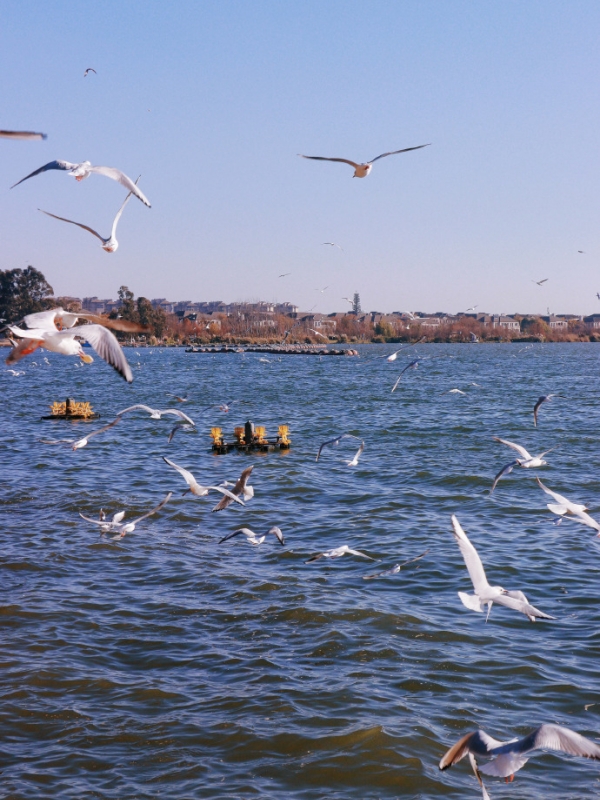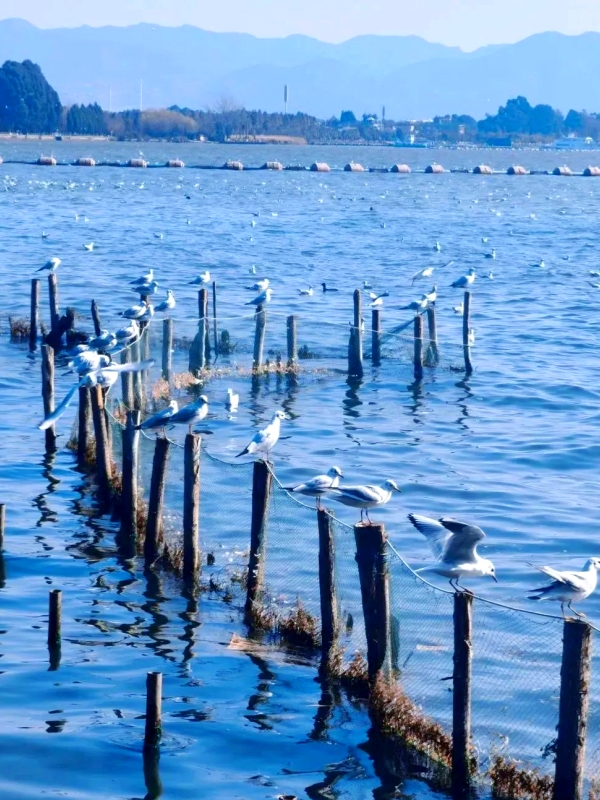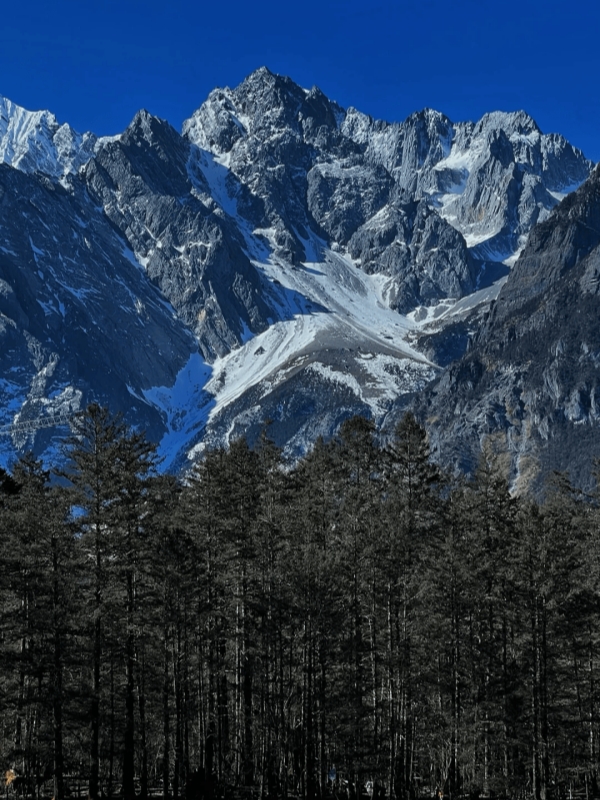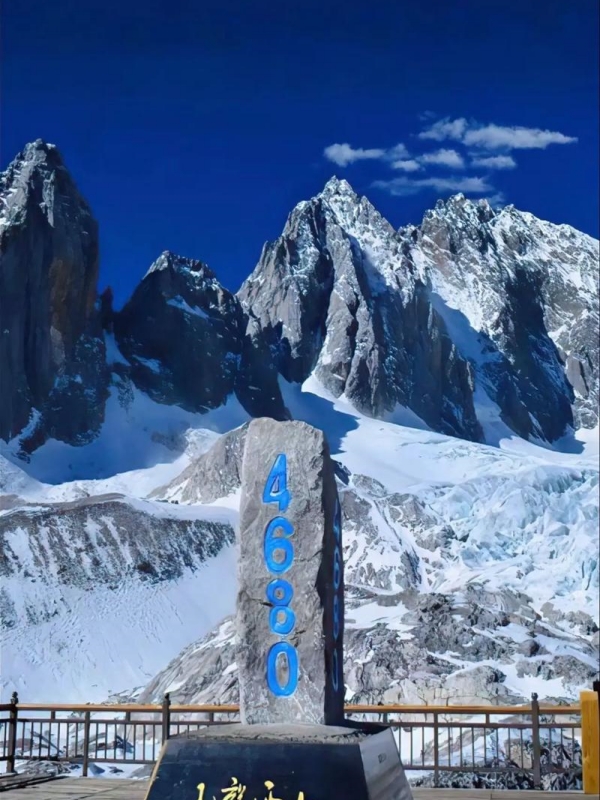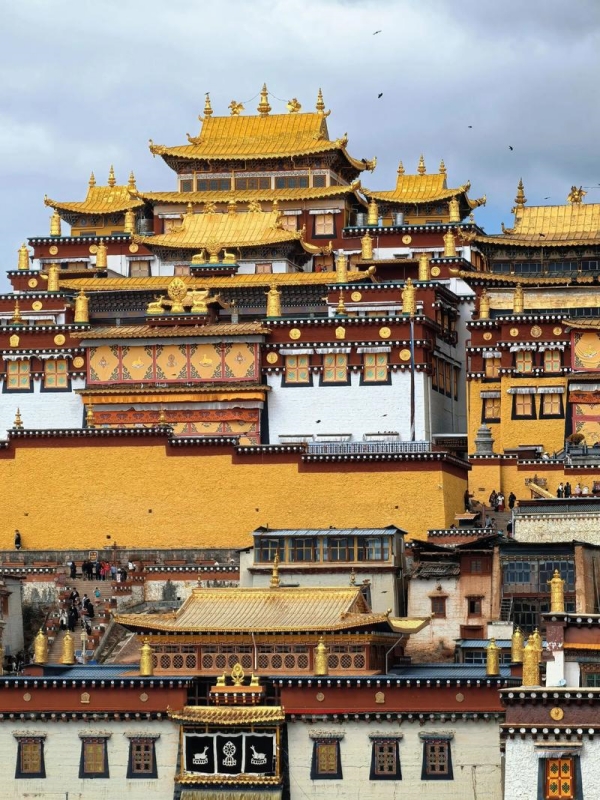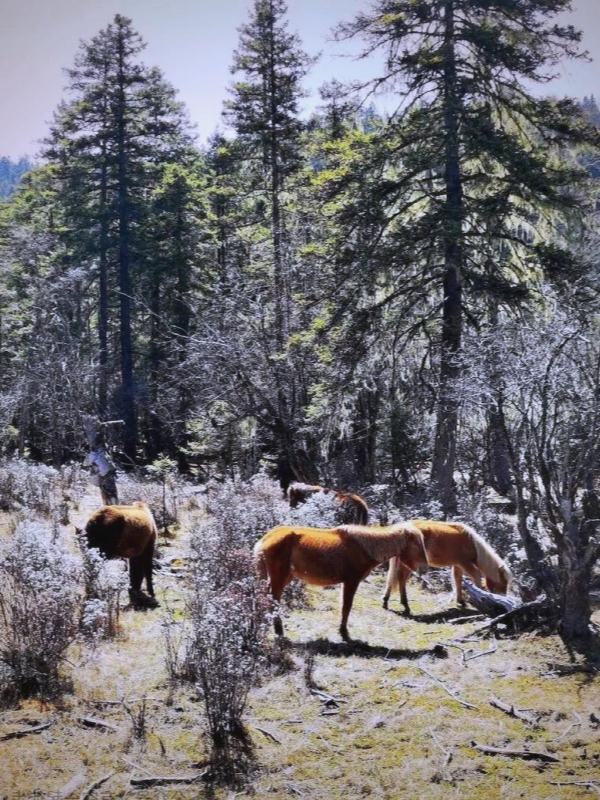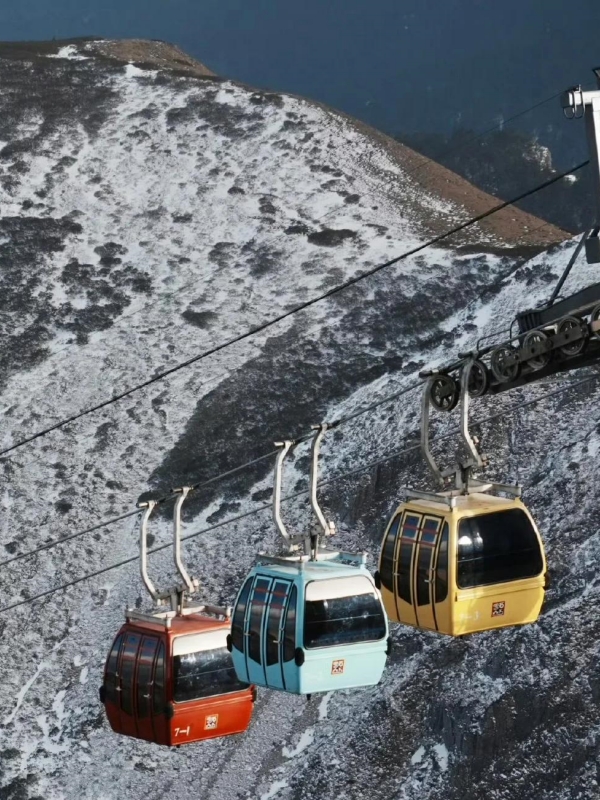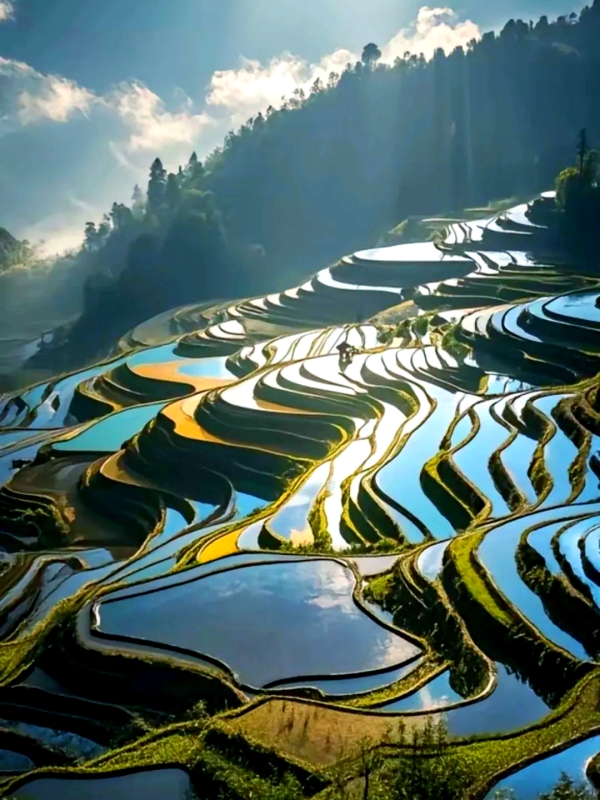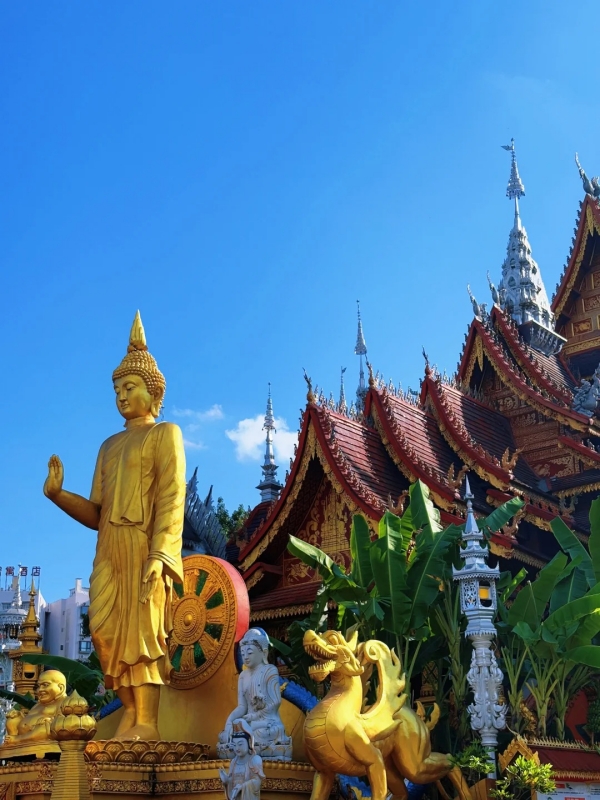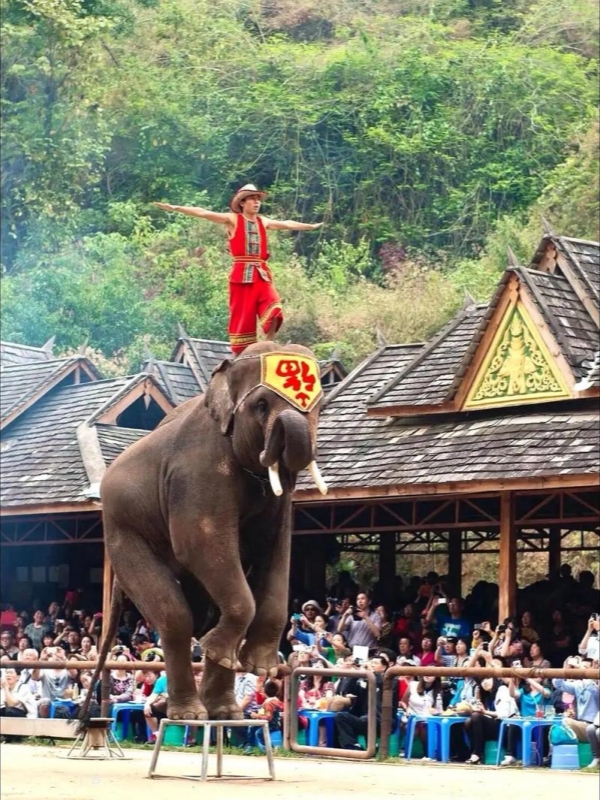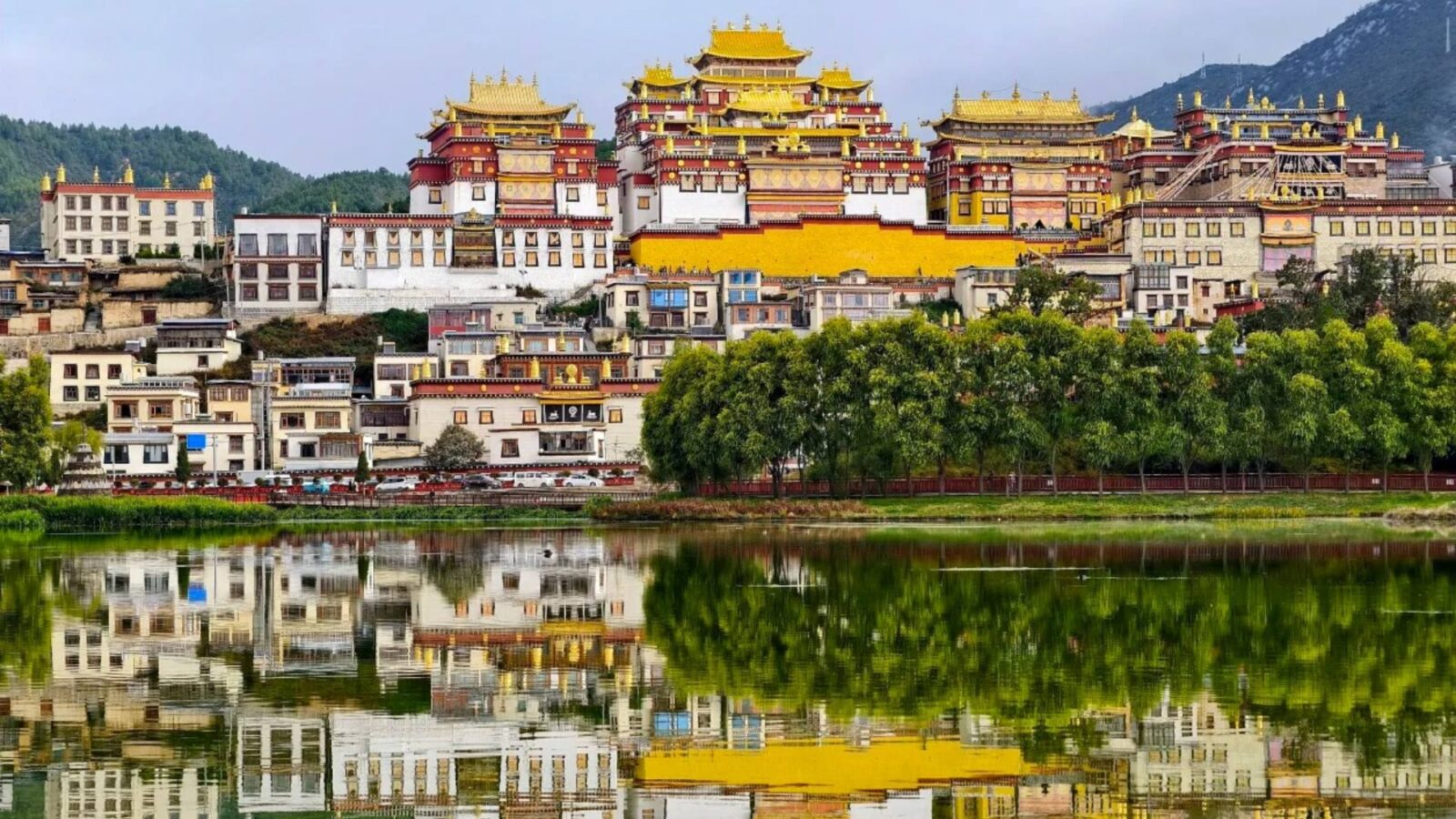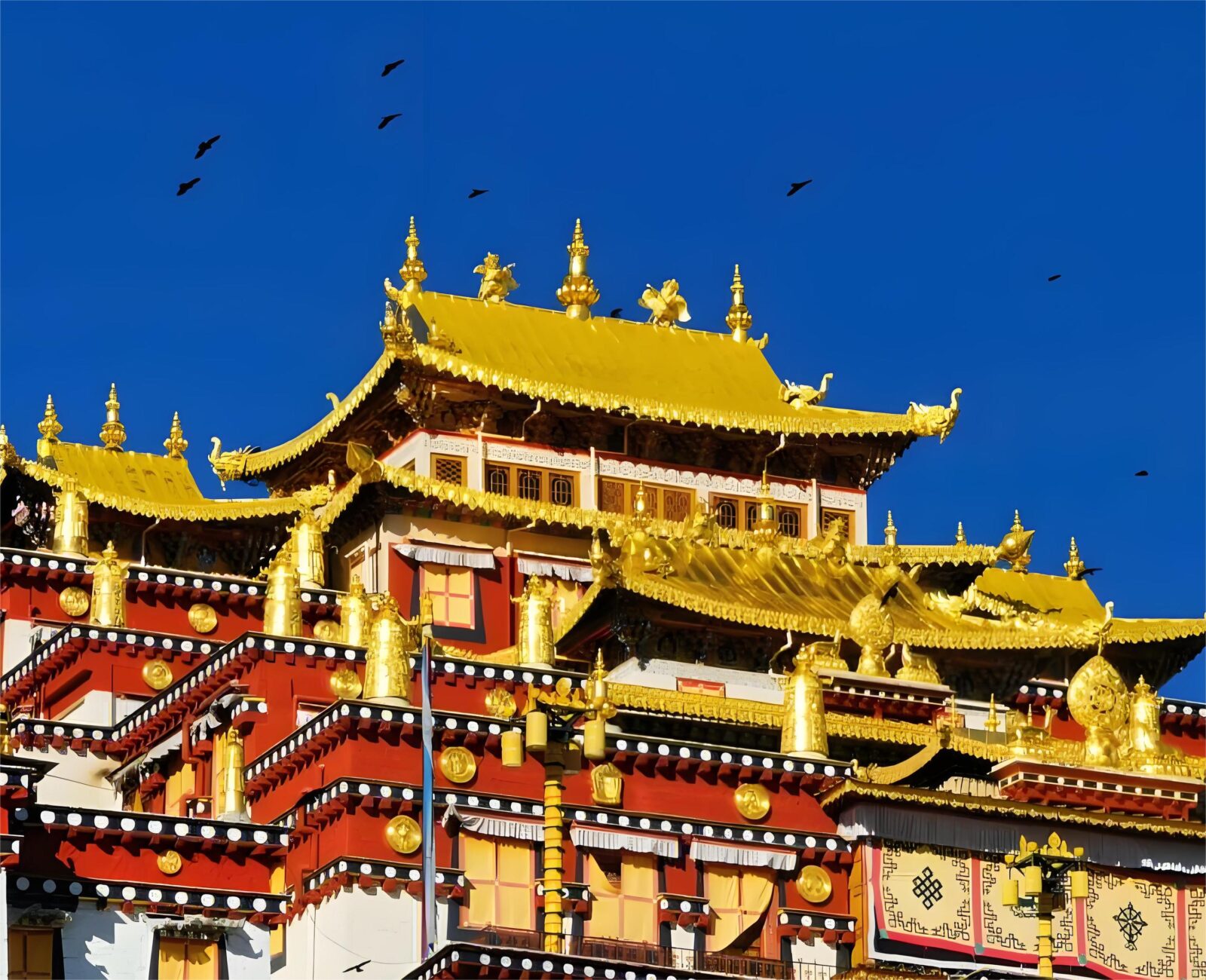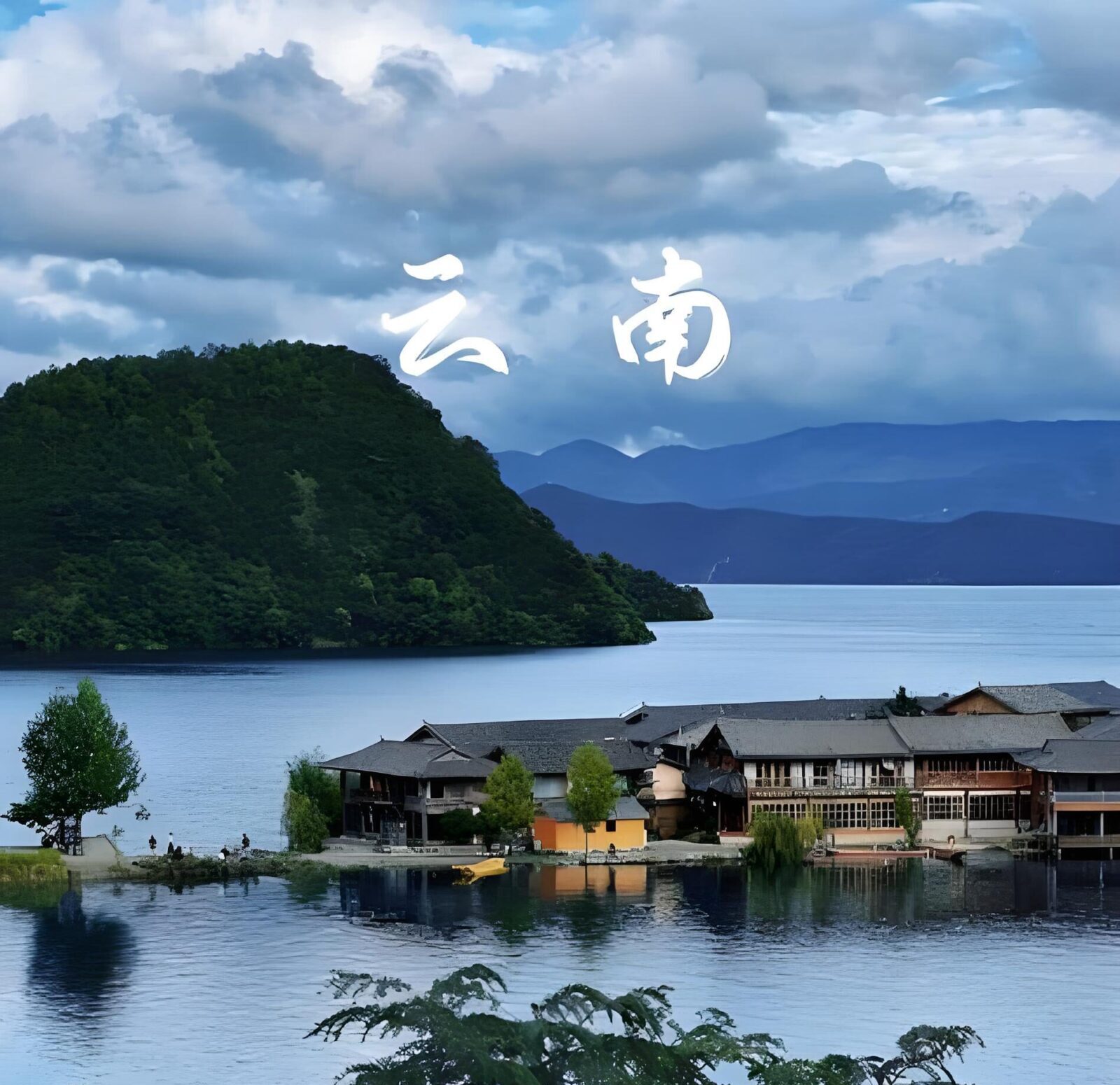
Yunnan
So, you’re thinking about Yunnan? Good call. This corner of China is wild — snow peaks, rice terraces, tea fields, and ancient towns all squeezed into one province. Yunnan attractions aren’t just about pretty views; they’re about rhythm — the way life slows down around Dali’s lakes or hums through Lijiang’s alleys. Here, nature and culture mix like nowhere else, and every stop has its own vibe.
We’ll break it down city by city, so you don’t waste time hopping around blindly. From Kunming’s spring weather to Shangri-La’s high-altitude calm, you’ll find real tips on routes and how to handle the altitude without losing your breath. Curious which Yunnan attractions should top your list? Let’s figure it out together.
The 5-City Framework for Planning Yunnan Attractions
It is impossible to see all of Yunnan in one shot — it’s definitely bigger than Germany. So the proper thing to do is to choose a few towns that suit your style. Start off in Kunming, the chief center with easy air and rail connections, and then reach out for the nearby places of Dali, Lijang, Shangri-La or Xishuangbanna These towns are outposts which reveal other angles of Yunnan, from spring-like climate to high altitudes. This table will give you a handy guide to the special features of each stop.
| City | Must-See Attractions | Style & Highlights | Best For |
|---|---|---|---|
| Kunming | Dianchi Lake, Western Hills | Urban life meets lake views | First-timers, easy city escapes |
| Dali | Erhai Lake, Cangshan Mountain | Relaxed, cultural, scenic | Couples, backpackers, slow travelers |
| Lijiang | Old Town, Jade Dragon Snow Mountain | Historic charm, mountain backdrops | Photographers, solo adventurers |
| Shangri-La | Songzanlin Monastery, Pudacuo National Park | Tibetan heritage, alpine beauty | Explorers, nature lovers |
| Xishuangbanna | Jinghong, Dai Villages | Tropical forests, cultural mix | Families, nature seekers |
Kunming — Where Spring Never Ends and Lakes Meet Mountains
- Dianchi Lake
- Haigeng Dam
- Yunnan Nationalities Village
Kunming has earned the nickname “Spring City” for its mild weather throughout the year. Sitting at 1,890 meters high, it is a great place to get used to the altitude before heading higher. Many travelers tend to use Kunming as a point of transition before heading to the major tourist cities and miss some excellent attractions located only thirty minutes from the downtown area. To say the least, the fact that there are not as many foreigners means that prices are not so high and the local life seems more genuine.
The downtown area has its usual city attractions like malls and chains, but it is the outskirts of town that is worth the trip: Dianchi Lake, Western Hills, and Yunnan Nationalities Village. Spend a day exploring this area or just choose one or two attractions before heading on to Dali or Lijiang. Ever wondered what life is like in a city where it never leaves spring? Check Discover Kunming and find your version of everlasting warmth.
Dianchi Lake & Western Hills — A Scenic Getaway Above the City
If you have only one day in Kunming, start here. Dianchi Lake is large enough to appear like the sea, and the Western Hills, that rise behind it? Locals call them the "Sleeping Beauty." Take the aerial tram, or hike through the pine tree paths and small temples of Taoist worship, to the Dragon Gate cut in the cliffs.
The view there is wild enough, with the sky, lake, and city all lying in layers like a painting. Go early, have your photographs taken, and finish the forenoon by enjoying slurpy crossing-the-bridge noodle soup at a lakeside booth.
Haigeng Dam — A Place Where Mornings and the Seagulls by the Lake Are To Be Enjoyed.
Down at Haigeng Dam life is slow. You will see joggers, children chasing bubbles and old men and women feeding seagulls of red beak that fly in from Siberia every winter. It is free, supremely restful and is different at sunrise, for the whole expanse of the lake is gold and glowing. Get off Metro Line 3 at the Dianchi Convention Center station and walk some distance — it is like entering a post card where people actually live.
Yunnan Nationalities Village — A Short Cut to 25 Nationalities.
Right by it is found the Yunnan Nationalities Village, which contains 25 nationalities, each in its own park — Dai bamboo houses and Bai courts, and Tibetan temples all in one walk. True, it is partly touristy, but if you are short of time, it is a quick way of grasping Yunnan's mixed lot of peoples, customs, dances, food odours, etc.
You can twirl a prayer wheel, watch a fire dance and then taste grilled skewers by the lakeside. It is a sweet, easy half-day if you are not yet quite ready to leave for Dali and Lijiang.
Dali — The Bohemian Strain in Rhythm between the Mountains and the Lake.
- Erhai Lake Cycling Route
- Three Pagodas
- Cangshan Mountain
Dali possesses the slow, leisurely swing of rhythm, which hardens with no small difficulty into another metrical plan. The Old Town is still present with its white walls and grey roofs, ensconced between Cangshan Mountain and Erhai Lake, and you will observe backpackers whirling about on their e-bikes, or sipping coffee in small quadrangles, or bartering with the native traders over tie-dyed scarves. Are you met to feel what makes Dali the unique place it is? Visit Things to Do in Dali and feel the spirit of Bai culture.
Avoid the new town, with its evident traffic and malls, and contrive to live with an air which is filled with the smell of roasted barley and the mountain wind. Accommodation ranges from ¥80 for a bunk in a dormitory to ¥400 for a completely bare courtyard with a view.
Erhai Lake Bikeways — You Gotta Do This Ride
If Dali has a heart, it is Erhai Lake. Rent an E-bike (¥50-80/day), don your sunglasses, and ride the western seashore—fishing boats, Bai grannies hanging fish out to dry and the sun glinting off the water. The east side is crowded and priced, so make it cool. Cruise out to Xizhou Town, munch on Xizhou baba, check out the tie-dye studios, and summon a DiDi cab back before your legs give out. The ride is pure freedom, a kind of silence that stays in your ears.
Three Pagodas — Beautiful Towers Or Just a Picture Stop
The Three Pagodas are the icon of Dali, proud token of the age of the Nanzhao kingdom. Ah yes, ¥120 for the tickets, but you can get terrific pictures of it at the exterior of the north gate. The reflection pool is pretty good for your Insta account back honest, though it’s a touch too tidy now. Reach there in the morning (8 a.m.) before the tour busses pull in. If temples are not your thing, skip away and has noodles. No problem, just no transformation.
Cangshan Mountain — Way of Clouds, Peace of Mountains
Look west and—bang—the mighty Cangshan Mountain stands upbreaking up the sky. Ride the Zhonghe cable to 2600 m for that slow wander along the peaceful Cloud Passway—flat, all lookout points. Cable tickets ¥ 180-280, but walking from Gantong Temple is a thousands times to your good. Check the weather, though the clouds can wreck your view at a moment's time.
Time to go? April–May or Sept–Oct. If making for Shangri-la or Tiger Leaping Gorge North, hold on to the walking for the legs for that time.
Dali Old Town — Market at Dawn and Music at Night
By day, Foreigner Street is lively with tie-dye stores and lazy cafes; at night but neon bars and wandering musical souls bustling beneath strings of fairy lights. Drinks go for ¥30-80 and it’s all backpackers' pastiche half beer, half wanderlust.
Want to sleep? Get a crumple near Cangshan Gate, away from crickets. Mornings are different ranking here: South Gate market rocks from 7 a.m until 10 a.m. Have all the locals there in there shoveling home the vegetables and bickering out the prices of that. Yeah, Dali is touristy, but when the evening wind from the lake comes gently down the ways in, it is still magic.
Lijiang — A Mix of Bustle, Heritage, and Alpine Wonders
- Lijiang Old Town
- Jade Dragon Snow Mountain
- Tiger Leaping Gorge
Lijiang Old Town — A Maze of Shops and Songs
Think 300 inns and 500 shops crammed into a maze you’ll definitely get lost in. Cute? Yeah. Peaceful? Not so much. The Old Town ticket costs ¥80 “for preservation,” but locals just laugh. Pro tip: after 8 p.m., no one checks, so you can wander for free. Mornings are gold—Naxi grannies sweeping, sun sliding over rooftops, no blasting EDM yet. Nights? Pure chaos. Xinhua Street glows neon, bars pumping, ¥20 shots, everyone’s half-dancing, half-yelling. Hungry? Slide over to Qixing Street for noodles that slap and won’t wreck your wallet.
Jade Dragon Snow Mountain — The Glacier View Worth the Breath
North of town, Jade Dragon Snow Mountain looks straight out of a fantasy movie—13 peaks, glaciers, all drama. But it’s a pricey scene: ¥100 entry, ¥180 cable car, ¥20 shuttle, ¥60 oxygen. That cable car rockets you up to 4,506 meters in fifteen minutes, and yeah, everyone’s gasping for air like they’ve run a marathon.
Weather’s moody too—clear at 9, fogged in by 10. Honestly? The Blue Moon Valley at the base steals the show—turquoise pools, white terraces, fewer tourists. If clouds roll in, skip the summit and chill lakeside instead. Just book through the WeChat mini-program early; lines get insane.
Tiger Leaping Gorge — Trails, Thunder, and Adventure Highs
If you’ve got stamina, Tiger Leaping Gorge is the real deal. It cuts deep between Jade Dragon and Haba Snow Mountain, with the Yangtze roaring below. The high trail takes about two days—first day up the “28 Bends,” all sweat and views, then crash at Halfway Guesthouse where sunsets turn the cliffs orange.
Day two winds to Tina’s and Walnut Garden, past barley fields and old stone huts. Rooms are ¥50–80, meals simple but hit the spot. Avoid July–August—mud season sucks. But when you stand on that ridge, lungs burning, wind howling, river raging below? Yeah, that’s the moment you’ll never forget.
Shangri-La — High-Altitude Calm and Tibetan Soul
- Songzanlin Monastery
- Pudacuo National Park
- Shika Snow Mountain
Shangri-La’s way up there—3,280 meters—so yeah, your lungs will notice. Locals still call it Zhongdian, but the “Shangri-La” name stuck after that old book Lost Horizon romanticized the place. And honestly? It kinda lives up to the myth. Prayer flags snap in the wind, monks chant low and steady, and that smell of pine mixed with yak butter hangs in the air.
Don’t rush it though—coming from Kunming, Dali, or Lijiang gives your body time to chill. Fly straight in and you’ll probably spend a day feeling woozy. Once you acclimate, though, it’s breathtaking—literally. Picture Songzanlin Monastery, Pudacuo National Park, and Shika Mountain, all under that wild blue sky.
Songzanlin Monastery — Golden Roofs and Morning Prayers
Everyone here calls Songzanlin Monastery the “Little Potala,” and yeah, it earns the hype. Built back in 1679, it crawls up a hill in layers of gold and red. Pay ¥90, hop on the shuttle, and suddenly you’re walking through rooms glowing with butter lamps, monks chanting like they’ve got all the time in the world. Go early—like 7 a.m.—and catch the morning prayers; it’s haunting and beautiful. One monk even showed me his iPhone once, giggling at my terrible Chinese. No photos inside, so don’t push it.
But outside? That reflection pond at sunrise is unreal—gold light, perfect stillness. Just go early before the bus groups invade, and yes, grab some yak butter tea. It’s salty, weird, and weirdly cozy when your hands are freezing.
Pudacuo National Park — Lakes, Pines, and Perfect Silence
Pudacuo National Park sits high between 3,500–4,000 meters, all shimmering lakes and quiet pastures. Tickets cost ¥100, and buses ferry you to Shudu Lake, Militang Pasture, and Bita Lake.
You stroll along neat wooden paths—it’s polished, sure, but the views still hit. Shudu Lake shines gold in autumn, Bita Lake hides in the pines and smells like cold earth. Bring layers; the weather flips fast. Yeah, it’s not wild wilderness, but it’s clean, calm, and somehow peaceful. If you’ve done Yosemite, this’ll feel soft. But if you’re new to high-altitude nature, it’ll blow your mind—and maybe your breath.
Shika Snow Mountain — Sacred Peaks and Whispering Winds
In Tibetan, “Shika” means a mountain full of red deer — the kind locals believe bring good luck and long life. To the inhabitants of Shangri-La, the Shika Snow Mountain is no ordinary scenery but holy land. You will find prayer flags blowing in the wind, yaks dashing under the ridges, and locals surrounding the shrines and taking the steps without making any noise.
On the up-slopes are the Spiritual Rhino Lake, pine forests and grasslands in which marmots play among prayer stones. It’s calm, but never empty. The slightest noise, a bell, a breeze, a singing, all are belonging to something more ancient than the path you walked to obtain it. Not a postcard picture, but a place which really breathes.
Southern Yunnan — Rice Terraces, Forests, and Slow Sunshine
- Yuanyang rice terraces
- Xishuangbanna
- Wild Elephant Valley
Southern Yunnan hits different. Forget the cold north—down here it’s tropical forests, heavy air, and fish soup that wakes you up. Sitting next to Laos and Myanmar, it’s wild, steamy, and full of color. People are chill, food’s spicy-sour and addictive, and life just feels slower. The top spots? Yuanyang’s crazy rice terraces and Xishuangbanna’s palm-lined temples—they show two totally different sides of Yunnan.
Yuanyang Rice Terraces — The Sunrise Mirror of the Mountains
The Yuanyang rice terraces look unreal—like the mountains got turned into mirrors. The Hani people have shaped them for 1,300 years, and every sunrise feels brand new. Head to Duoyishu before 6 a.m.—the light hits the water and everything glows gold.
You’ll hear roosters, see mist rising, and maybe forget to breathe for a sec. Stay close (¥80–150 a night), grab local tea, and just chill while the sun climbs. Don’t miss Shengcun Market—loud, messy, full of mushrooms, tobacco, and laughter. It’s chaotic in the best way.
Xishuangbanna — Palm Trees, Temples, and Tropical Ease
Way down south, Xishuangbanna feels like Thailand’s laid-back cousin—palm trees, temples, bamboo houses, and that sticky air that makes you move slow. Base in Jinghong, right on the Mekong River, where the nights buzz with music and grilled lemongrass.
Take a day trip to Wild Elephant Valley (¥65)—maybe you’ll spot elephants at sunrise—or wander Ganlanba Dai Village, where monks stroll barefoot and kids splash in the river. Even if you don’t see elephants, the jungle hum keeps you hooked. Grab sticky rice in bamboo, grilled fish with lemongrass, and just vibe—it’s the kind of place that makes you forget what time it is.
Weather Strategy for Yunnan — Pack Layers, Not Regrets
Weather Overview — One Province, Five Climates
Yunnan’s weather is a wild mix—cool mountains up north, tropical heat down south. You could be freezing in Shangri-La and sweating in Xishuangbanna within the same week. Pack smart and layer up.
| City | Avg Temp (°C) | Best Months | What to Expect | Packing Tips |
|---|---|---|---|---|
| Kunming | 15°C | All year | Mild “Spring City” weather | Light jacket, umbrella |
| Dali | 10–25°C | Apr–Oct | Warm days, cool nights | Jacket + rain layer |
| Lijiang | 5–22°C | Apr–Oct | Cold nights, mountain sun | Sunscreen, fleece |
| Shangri-La | –5–15°C | May–Oct | Snow in winter | Warm layers, gloves |
| Xishuangbanna | 25–35°C | Nov–Apr | Hot, humid, tropical | Breathable clothes, hat |
Seasonal Travel Tips — When Yunnan Feels Just Right
The best time to visit Yunnan attractions is September–October—clear skies, comfy temps, and fewer crowds. Spring’s great too, just watch for rain by May. Skip July–August unless you like crowds and downpours. During holidays like Oct 1–7 or Spring Festival, expect chaos—tripled hotel rates and sold-out trains.
| Season | Highlights | Watch Out For | Travel Tip |
| Spring (Apr–May) | Flowers, mild weather | Afternoon rain | Bring a light jacket |
| Summer (Jun–Aug) | Green scenery | Heavy rain, crowds | Book trains early |
| Autumn (Sep–Oct) | Best skies | Cooler nights | Perfect for photography |
| Winter (Nov–Feb) | Warm south, snow north | Freezing in Shangri-La | Layer up |
Yunnan’s charm lies in its contrast—mountains, jungles, and everything between. Pack for all seasons, stay flexible, and you’ll be ready for anything.
Travel Tips for Yunnan — Smooth Rides and Smart Moves
Transportation and Accommodation — How to Move and Where to Stay
| Category | Recommendation | Notes |
|---|---|---|
| High-speed trains | Best for Kunming, Dali, Lijiang | Fast, scenic, frequent departures |
| Buses/Flights | For Shangri-La, Yuanyang | Budget buses or short flights; book ahead |
| Urban travel | E-bikes ¥50–80/day; DiDi & taxis | Use apps; avoid unmetered taxis |
| Accommodation | Hostels ¥50–100; homestays ¥200–400 | Book 2–3 weeks early during peak season |
For travelers, trains work best between big cities, while buses or flights cover the rest. In towns, e-bikes are cheap and fun, but apps like DiDi make city rides smoother. Lodging fits any budget—just book early during holidays.
Altitude Sickness Prevention — Breathe Slow, Go High Smart
- Start slow: Altitude affects everyone differently, so don’t rush climbs.
- Stay hydrated: Drink water often and avoid alcohol while adjusting.
- Acclimate smart: Spend a night in Kunming or Dali before heading higher.
- Prepare tools: Carry oxygen cans (¥30–60) and Hongjingtian tablets.
- Listen to your body: If dizziness or breathlessness hits, rest immediately.
Taboo Reminders — Respect Traditions, Travel Kindly
- Photography – Always ask before taking pictures of locals, especially elders, monks, or inside temples.
- Dress code – Wear modest clothes. Avoid shorts or tank tops at places like Songzanlin Monastery or the Three Pagodas.
- Religious etiquette – Don’t touch sacred items like prayer flags or wheels unless allowed. If you do, spin them clockwise.
- Village visits – Wait for the host’s invitation before entering homes. Accept food with both hands as a sign of respect.
- Public events – Follow locals’ lead during dances or festivals such as Guozhuang Dance and Water-Splashing Festival to stay polite and blend in.
Frequently Asked Questions — Yunnan Travel Made Simple
Q: Can I visit all major Yunnan attractions in one week?
If you only have a week, you can squeeze in Kunming, Dali, and Lijiang, but it’ll be tight. Most travelers rush and regret it. Pick two cities instead—like Dali and Lijiang for culture and nature. High-speed trains help, but travel still eats time. Yunnan’s big, so go slow and enjoy it. Add a rest day midway to actually soak in the views.
Q: How can I avoid crowds at popular spots?
Go early, like before 8 a.m., or visit late afternoon. Most Chinese tour groups hit attractions between 10 and 3. Weekdays are calmer, and off-season travel saves your sanity. A local guide can show you hidden paths that most tourists miss. Or check small guesthouse maps—locals often mark quieter corners themselves.
Q: Should I worry about altitude sickness?
Yeah, especially in Shangri-La and Jade Dragon Snow Mountain. Spend a few nights in lower cities first—Kunming or Dali—so your body adjusts. Drink water, rest, skip alcohol, and grab oxygen cans if needed. Take it easy that first day. Locals swear by butter tea to warm up and help you breathe easier.
Q: What’s a normal daily budget in Yunnan?
You can travel on ¥300 a day if you stay in hostels and eat street food. Mid-range comfort runs ¥600–800 with guesthouses and restaurants. Splurge travelers spend ¥1,200+. Food’s cheap, tickets add up fast—so plan smart. Cash still helps in rural areas, even though Alipay and WeChat work almost everywhere.
Q: Is the minority culture experience real?
Depends where you go. Lijiang’s Old Town feels staged, but smaller villages like Baisha or Xizhou show real daily life. In Shangri-La, Tibetan culture’s authentic—monks, temples, prayers. Just be respectful and ask before taking photos. Some locals love chatting if you say hi first or try a few Chinese words.
Q: When’s the best time for Yuanyang rice terraces?
Go from November to March when the fields are flooded and glowing at sunrise. It’s a photographer’s dream. April to October? Still pretty, just greener, not reflective. Stay a couple days for better weather chances. Bring warm clothes—it’s chilly before dawn, even if the day feels mild.
Q: Will people understand English?
Not much outside Kunming, Dali, and Lijiang. Download translation apps and offline maps. Show Chinese names to taxi drivers. People are friendly, patient, and will help even with gestures. Smiling goes a long way—locals appreciate any effort you make.
Q: Is Yunnan safe for solo travelers?
Totally. Crime’s rare, and locals are kind. Watch for small scams like overcharging taxis or bars in Lijiang. For hiking, tell someone your route. It’s one of the safest places you’ll travel in China. Just keep copies of your passport in case hotels ask again.
Q: What should I pack?
Pack layers—it’s cold in Shangri-La, warm in Xishuangbanna. Bring comfy shoes, sunscreen, and a light rain jacket. Add meds for altitude and a power bank for long train rides. Don’t forget tissues—trust me, you’ll need them. Wet wipes are gold when traveling rural routes.
Q: How long to stay at each place?
Dali needs 2–3 days, Lijiang another 2, and Shangri-La at least 2 if you’re heading higher. Kunming works as your start or end point. Yuanyang and Xishuangbanna take more time, so skip them unless you’ve got over a week. You’ll thank yourself for not rushing every sunrise.
